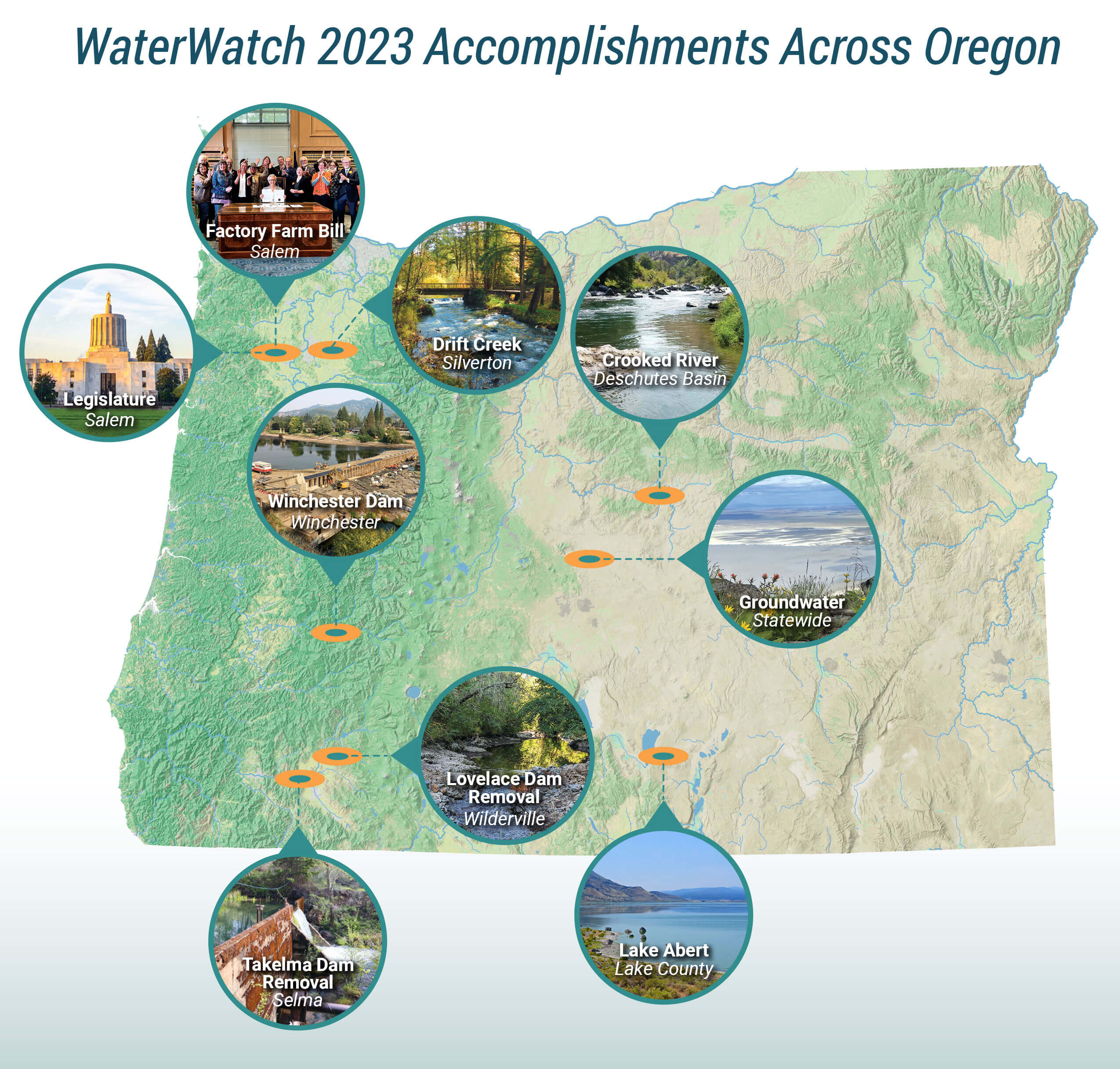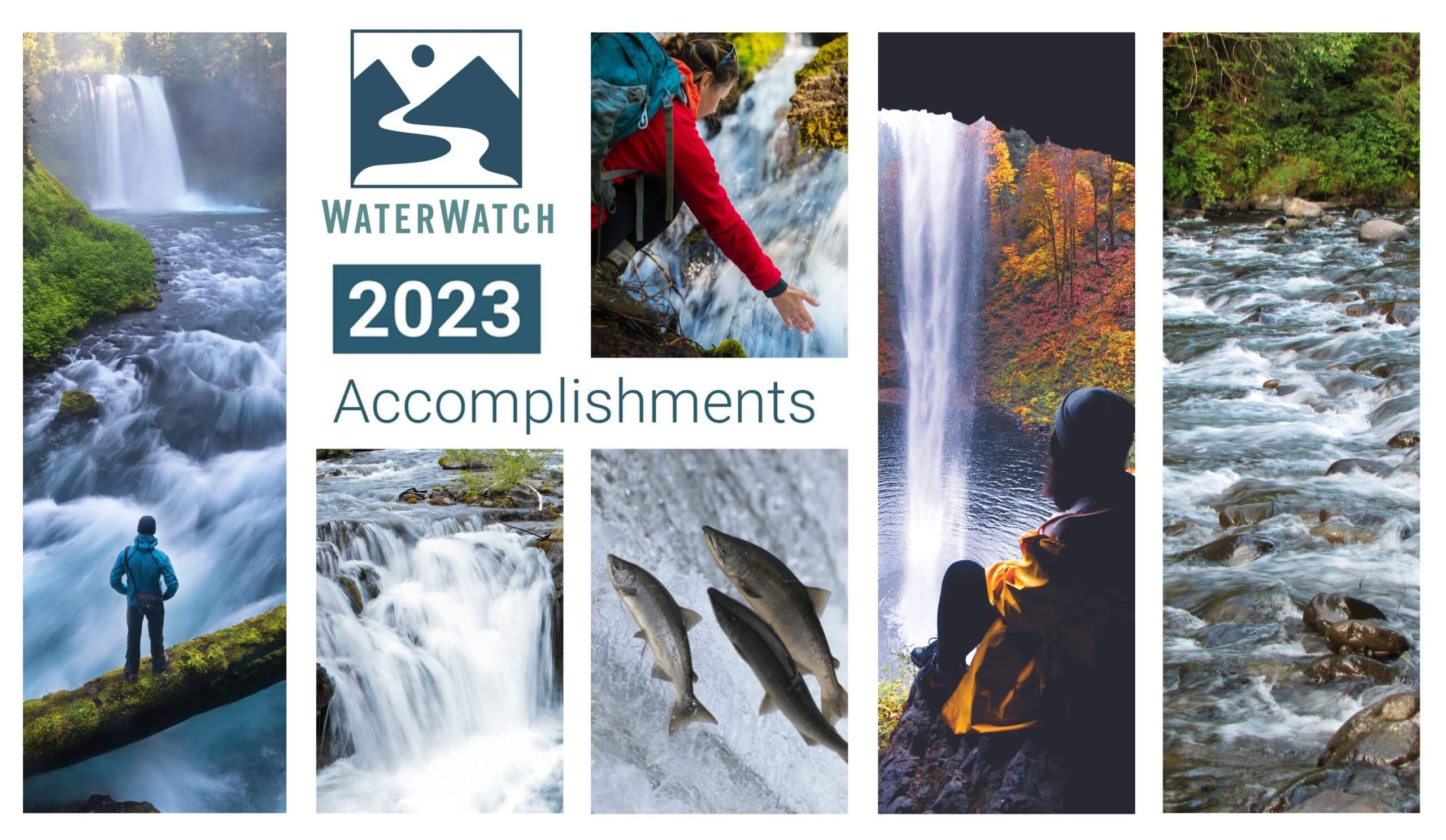
The end of the year often invites reflection on the previous 12 months, and an assessment of where we are compared to this time last year.
Who could have predicted, for example, the extent of the ecological calamities that occurred this summer on the North Umpqua River at the derelict Winchester Dam, or the subsequent progress made by state agencies in, at last, committing to a route of enforcement on the dam?
Who could have guessed GOP legislators would stage another, even more disruptive walkout from the Oregon legislature, only to have WaterWatch succeed in passing critical policy to ensure healthier rivers and flows in spite of the absences?
Who would have thought that, after well over a decade of advocacy, we would arrive at a major win on the Crooked River in 2023, or that even more dams would come down in the Rogue basin thanks to WaterWatch’s efforts?
For WaterWatch, 2023 was a landmark year. And our WaterWatch of Oregon 2023 Accomplishments report, expanded into greater detail here, showcases the impacts you helped make possible.
When considering your end of the year giving, consider a one-time or legacy gift to WaterWatch to help ensure a legacy of healthy rivers, lakes, and wetlands in Oregon with water to support fish, wildlife, and people.
Drift Creek Dam Proposal Halted
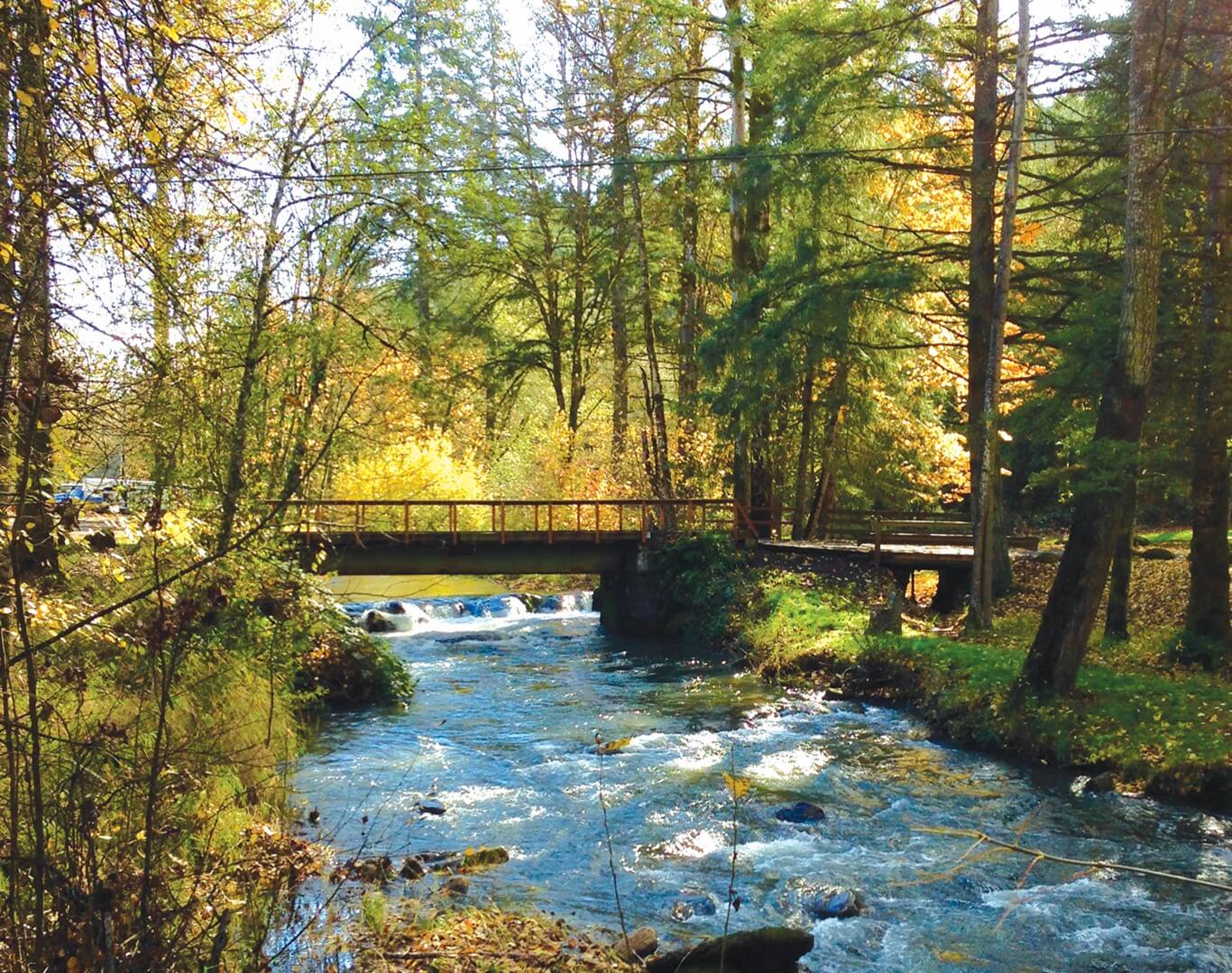
In a major WaterWatch victory for fish and instream water rights, the Oregon Court of Appeals upheld an earlier decision by the Oregon Water Resources Commission to deny a permit request from a Marion County irrigation district to build a 400-acre reservoir with a 70-foot dam on Drift Creek, a tributary of the Pudding River near Silverton.
In addition to the dam itself, the resulting lake would have flooded several family farms upstream that would not have benefited from the reservoir, and did not want it on their property to begin with. If the project had been permitted, affected farmers would have been forced by the District’s power of eminent domain to allow the project.
The Court of Appeals based its decision on the impacts of the proposed dam and reservoir on Drift Creek’s existing instream water right, and agreed that flooding a substantial portion of it would be in conflict with that right — a significant recognition that instream water rights protect streamflows throughout a reach of stream or river rather than just a quantity of water measured at a point along a stream or river. WaterWatch of Oregon is proud to have played a critical role in preserving the future of Drift Creek and the stability of its habitat and fish.
Lovelace Dam Marks Fourth WaterWatch-led Dam Removal in Three Years in Rogue’s Applegate Subbasin
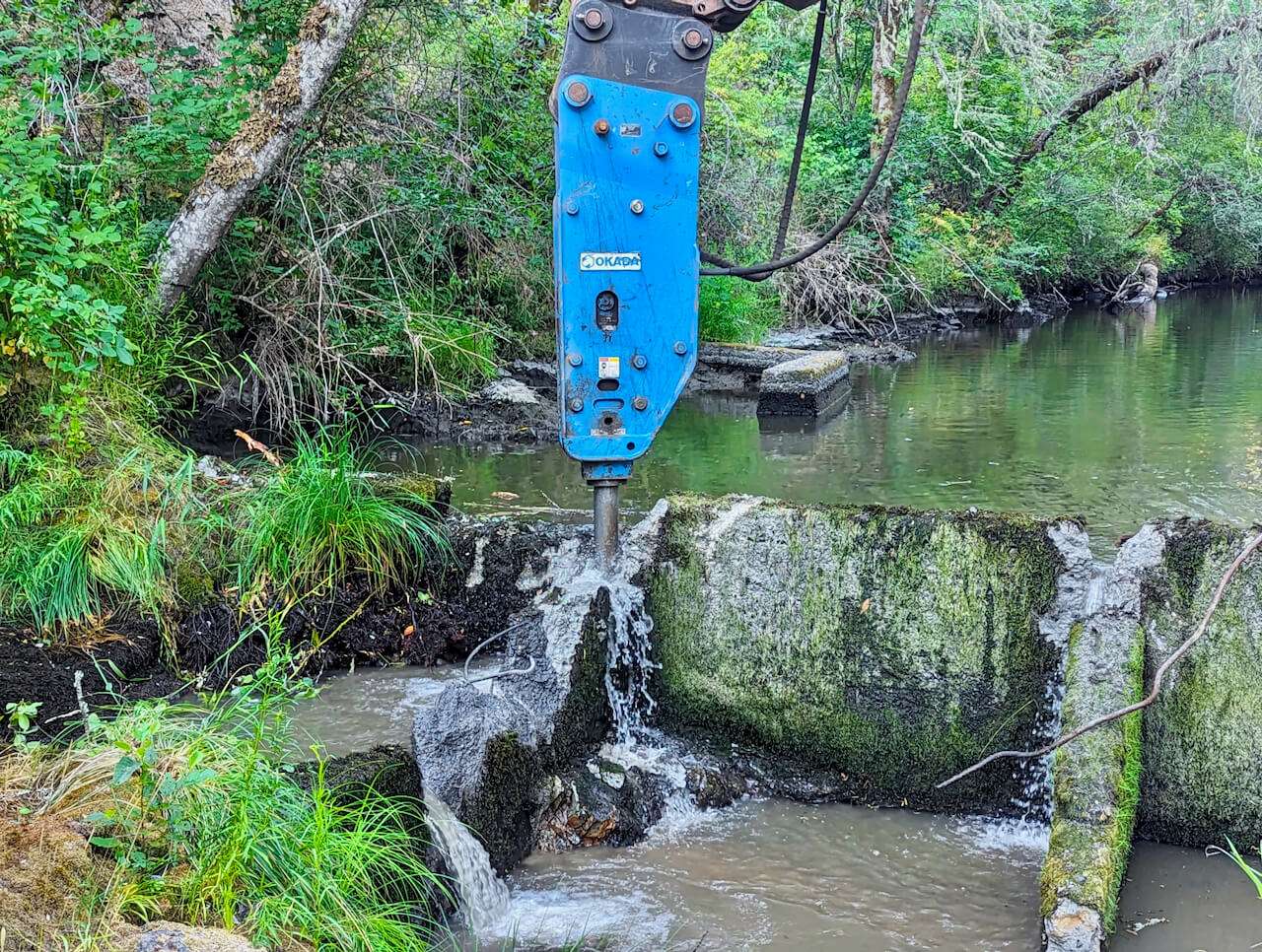
Work crews finished demolition on the abandoned Lovelace Dam this summer as part of a collaborative effort to restore access to habitat for native salmon and steelhead in Slate Creek, a key spawning tributary of the Rogue Basin’s Applegate River.
The fourth fish-impeding dam to be removed from Slate Creek by WaterWatch over the last three years, Lovelace’s removal significantly improves access to at least 26 miles of spawning and rearing habitat for salmon and steelhead while reducing flooding risk on the landowner’s property.
The project addressed the highest priority fish barrier in the Rogue since the WaterWatch-led Gold Hill Irrigation District Diversion Dam Improvement Project in 2016. In addition to federally-listed Coho salmon, Slate Creek provides spawning and rearing habitat for fall Chinook salmon, summer and winter steelhead, cutthroat trout, Klamath smallscale suckers, and Pacific lamprey. Slate Creek is now entirely free-flowing at the former dam site for the first time in at least a century. Crag Law Center was particularly instrumental in helping WaterWatch reach an agreement with property owners to move the Lovelace Dam removal project forward.
Takelma Dam Removal in Rogue’s Illinois River Subbasin Benefits Salmon and Steelhead
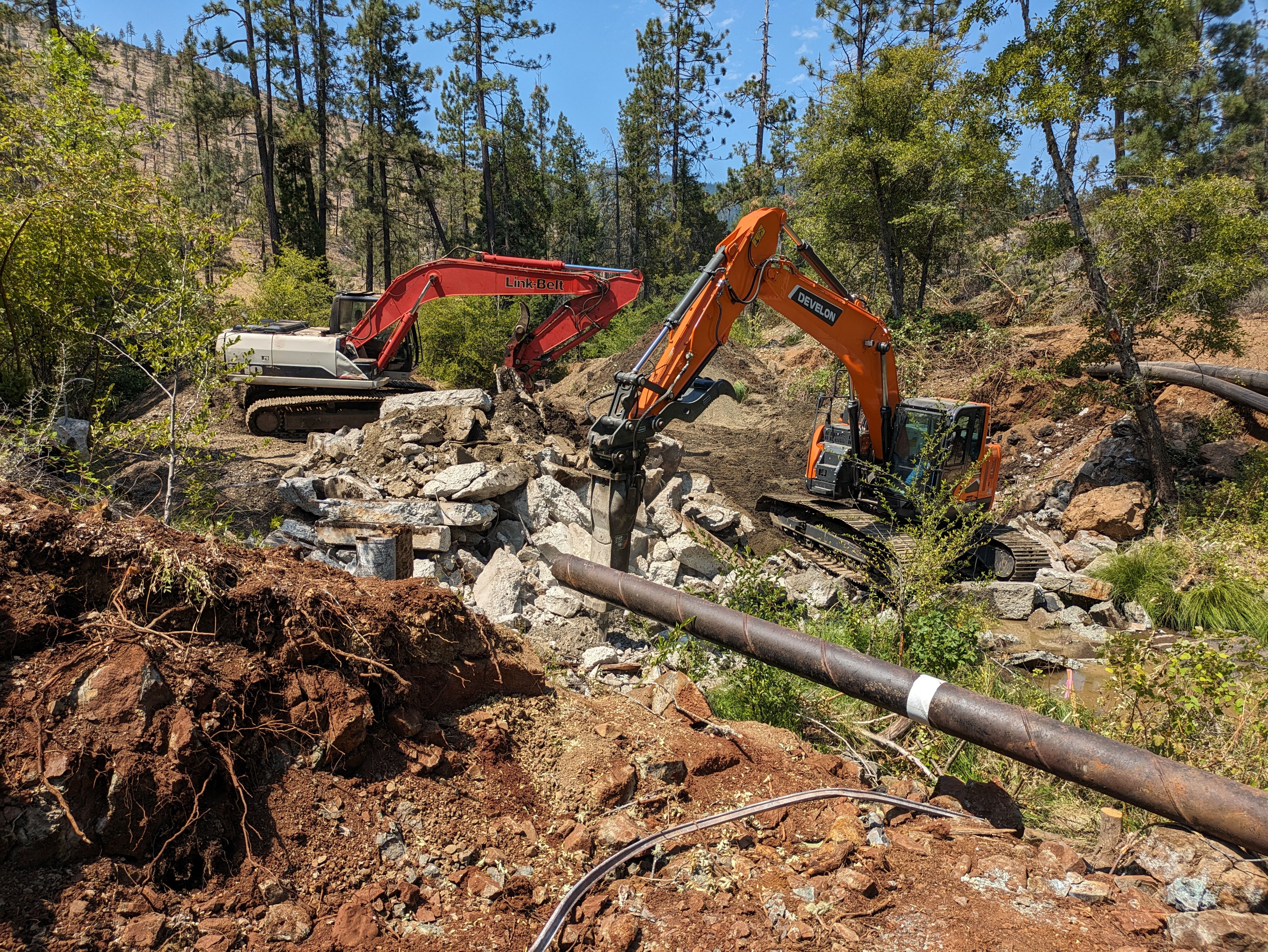
Removal of the 13-foot high, 70-foot wide Takelma Creek Dam and two other fish barriers near Selma this summer saw access returned to three-and-a-half miles of previously blocked spawning and rearing habitat along Takelma Creek for salmon and steelhead, and marked WaterWatch’s second Rogue Basin barrier removal project in one year. Takelma Creek, part of the Deer Creek subbasin of the Illinois River, is now entirely free-flowing for the first time in at least 70 years.
In addition to the dam itself, a logging road culvert that blocked fish passage was replaced with a fish-friendly low-water crossing, and a county culvert on the Illinois River Road that blocked fish passage was similarly replaced with a fish-friendly culvert. The project also improved rural water supply infrastructure by replacing the aging dam’s water diversion function with a screened and metered gravity diversion, and repaired a leaky water delivery pipe.
State and federal agencies have identified the Deer Creek subbasin, and improving access to quality fish habitat in its upper reaches, as important to the recovery of Southern Oregon and Northern California Coast Coho salmon, listed as threatened under the Endangered Species Act. In addition to Coho salmon, Takelma Creek provides spawning and rearing habitat for winter steelhead and cutthroat trout. WaterWatch secured a removal agreement for the dam in 2022 with the private landowner, Siskiyou Field Institute, which ensured removal at no cost to them. WaterWatch then worked with partners to secure the approximately $1.1 million in funding necessary for the project in less than 12 months.
Near-Record Fines Follow Ecological Disaster at Winchester Dam
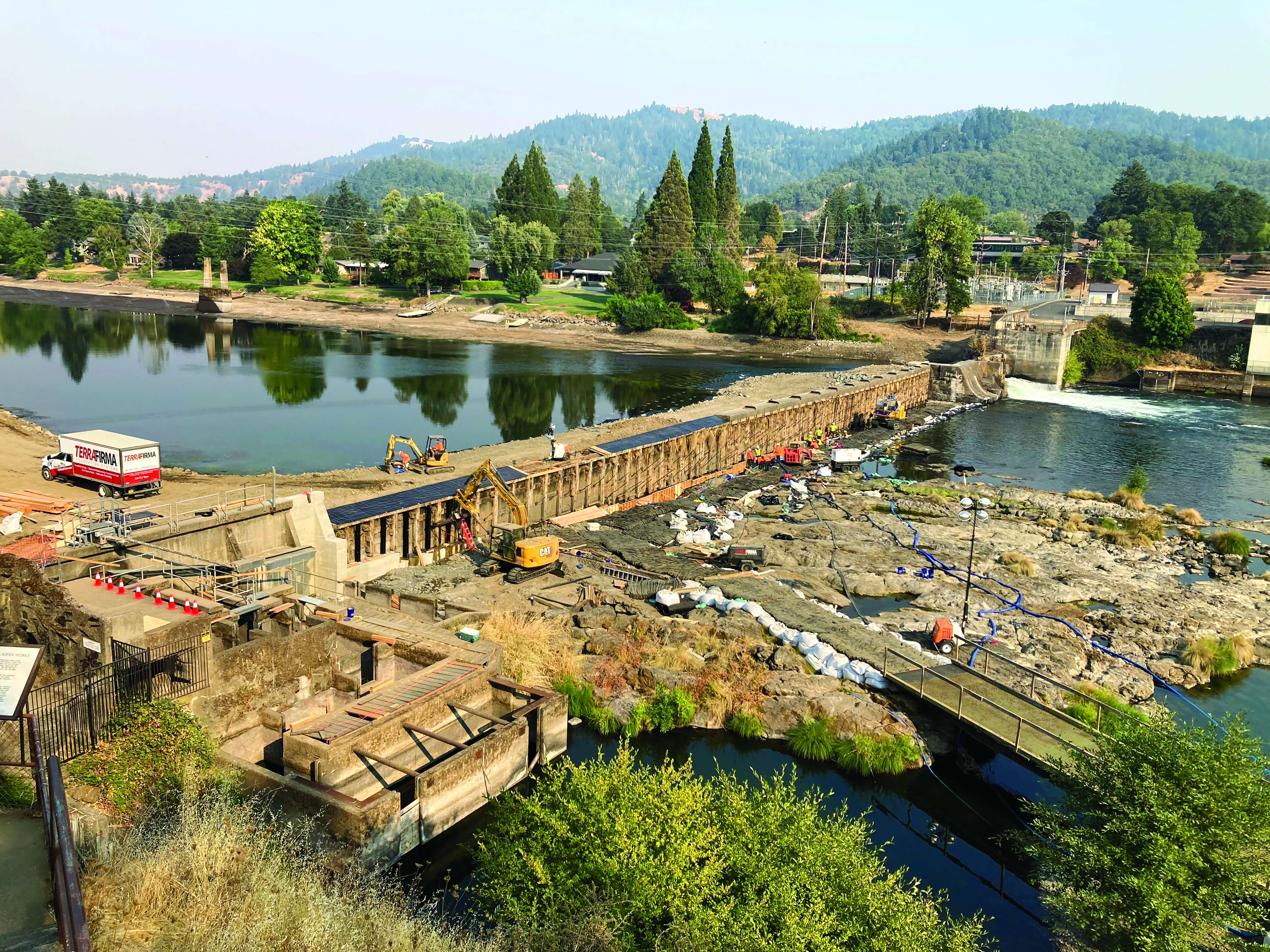
Years of grassroots efforts by a WaterWatch-led coalition of fishing, conservation, and whitewater groups and Native American tribes in the Umpqua Basin to end the harm caused by Winchester Dam and return unimpeded access for salmon and steelhead on the North Umpqua River finally paid off this year.
State regulatory agencies responded to public outcry and scrutiny from elected officials with over $27 million in fines against Winchester Dam owners and their contractors after this summer’s botched structural repairs blocked fish migration, polluted the river, and sparked massive losses of Pacific lamprey. The fines include one of the largest damages claims for the illegal killing of wildlife in Oregon history, and also seek recovery of taxpayer costs after state, federal, and tribal agencies mounted an emergency lamprey rescue operation at the dam in August.
Coming after years of alarms and concerns raised by river advocates over the dam owners’ chronic non-compliance with state and federal repair permitting, engineering, water quality, and dam safety requirements, along with their disregard for fish and wildlife protections despite the essential habitat importance of the North Umpqua for salmon, steelhead, and other aquatic life, the fines are welcome news and mark real progress when compared to the state’s previously lax enforcement at the structure.
Upholding the Instream Water Rights Act

In 1987 WaterWatch of Oregon drafted and secured Oregon’s landmark Instream Water Right Act, which allows the state to secure water rights to legally protect water instream — the first law of its kind in the West. By the late 1990s approximately 1,500 instream water rights had been successfully issued, but the program languished in subsequent years and became inactive. Over the last 10 years WaterWatch has helped revive the program, and Oregon is now on its way to securing an additional 400 instream water rights. Thus far efforts by the Oregon Department of Fish and Wildlife (ODFW) have focused on the Hood, Sandy, North Coast, Mid Coast, South Coast, Rogue, Umpqua, Goose and Summer river basins.
Throughout 2023 WaterWatch continued its work to support all instream right applications, helped secure funding for ODFW’s water program, and staved off legislation that would have severely weakened the Instream Water Rights Act. This ongoing work is critical to providing natural climate insurance for Oregon’s rivers and their fish, and is arguably the most significant streamflow protection initiative in North America today.
Following WaterWatch’s victory in the Oregon Supreme Court that confirmed old and unused hydro rights had to be converted to instream water rights, WaterWatch has continued to work on conversion efforts across Oregon. In 2023, we supported Oregon’s conversion of an unused hydropower water right on a tributary to the Powder River, and weighed in on conversion efforts in the Umatilla, Hood, and Willamette river basins. WaterWatch also helped stave off a legislative effort to create additional exceptions in the underlying statute that allows these instream conversions.
New Groundwater Allocation Rules Expected
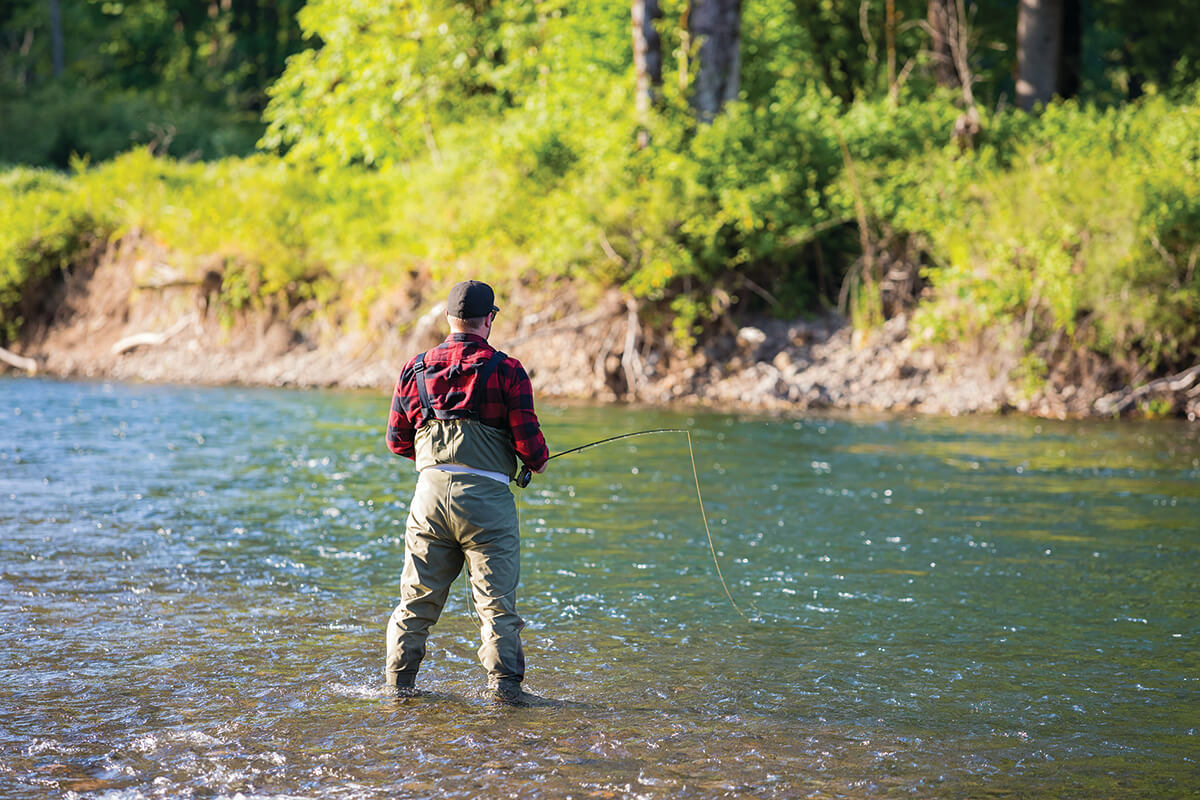
When people think of water, they typically think of water that can be seen, like water flowing on the surface in rivers, creeks, lakes, or falling from the sky as rain. But that’s surface water. And while surface water provides limitless varieties of ecosystems and habitat for plants, fish and wildlife, the critical contributions made to these ecosystems made by groundwater is certainly less visible. But as we’ve come to realize in Oregon and around the nation, groundwater sources aren’t finite. In fact, they’re running out.
After years of advocating for a more sustainable approach to groundwater permitting that aligns with the state’s landmark Oregon Groundwater Act of 1955 and prevents impacts from over-pumping, like the plummeting aquifer levels seen in the Harney Basin and around Eastern Oregon, WaterWatch is pleased the Oregon Water Resources Department is in the final stages of developing new science-based, sustainable groundwater allocation rules.
WaterWatch continues to press for adoption of these reforms — and to push back against efforts to slow or block their implementation — along with highlighting the importance of proactive groundwater management. We owe it to Oregonians now and in the future to enact sustainable practices for this precious resource.
Another Year of Legislative Success in Salem
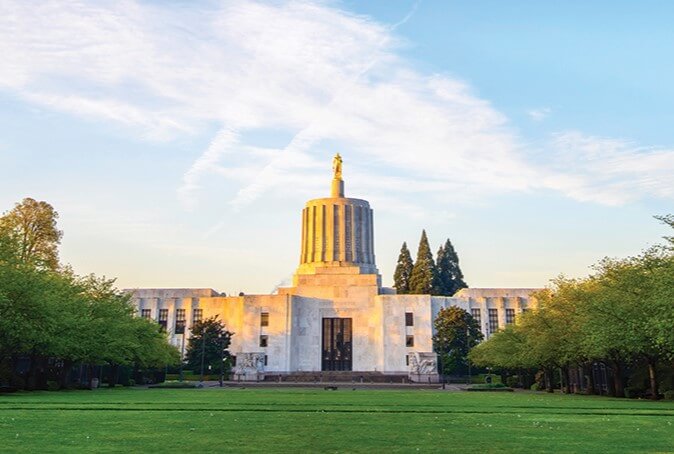
As the voice for Oregon’s rivers, WaterWatch of Oregon goes before the legislature in Salem year after year to advocate for policy reform, promote funding packages, and preserve groundwater, river flows, instream water rights, native species and wildlife — and hold regulatory agencies, commissions, and elected officials accountable.
Despite the GOP walk out which upended much of this year’s legislative session, WaterWatch and our allies helped secure the passage of several commonsense proposals that had been stalled in the legislature for years, including more rigorous enforcement tools aimed at stopping illegal water use and water use reporting authority.
WaterWatch also helped pass a $174 million dollar drought package that included provisions to boost ecosystem resiliency, and WaterWatch of Oregon played an outsized role in stopping a number of bills that threatened Oregon’s iconic rivers and management tools, including a bill that would have stopped the state from applying for new instream water rights past 2024.
Progress Toward Restoring Lake Abert
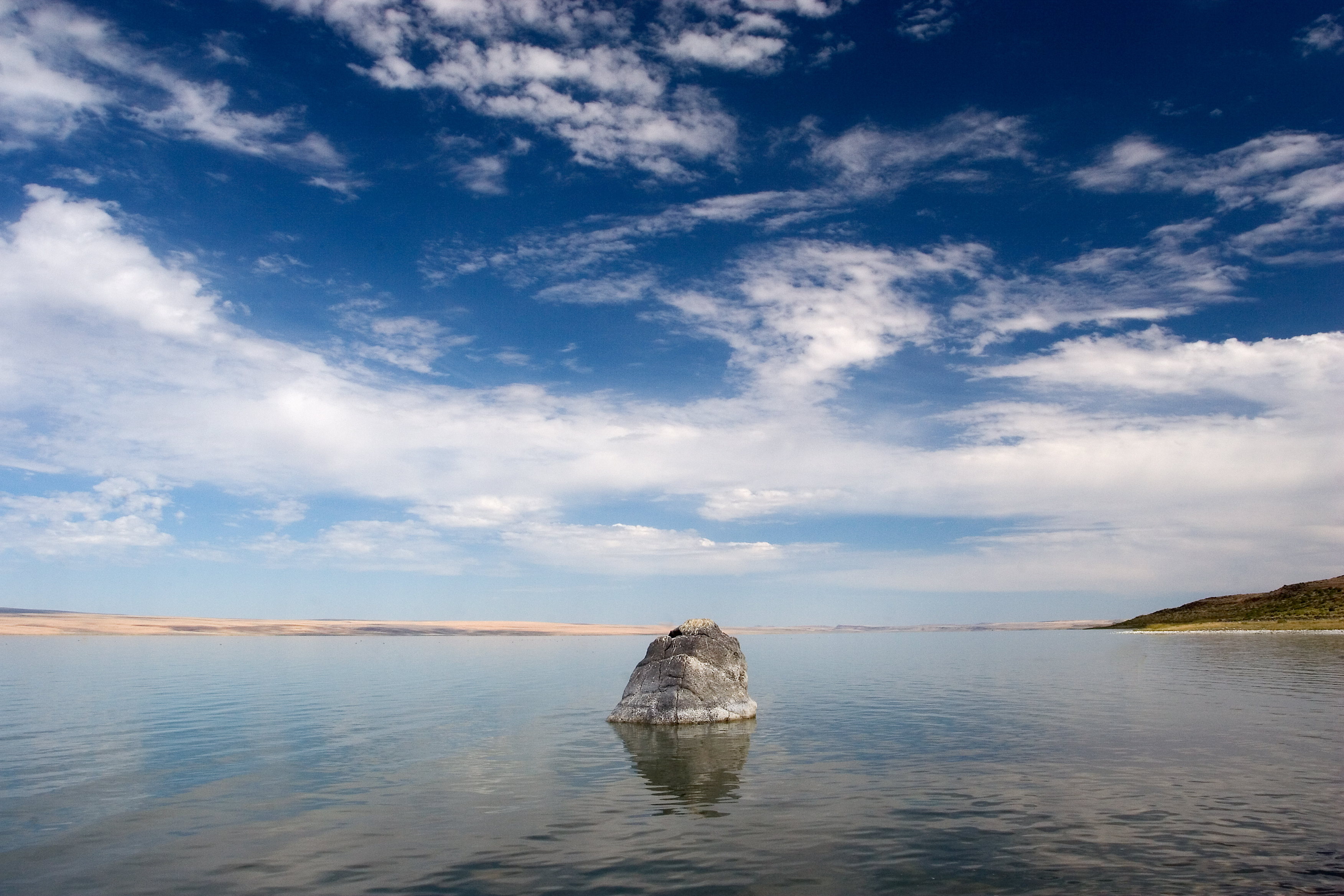
Located in sparsely-populated southeast Oregon, Lake Abert is one of the world’s most notable saline lakes. Like Utah’s Great Salt Lake or California’s Mono Lake, Lake Abert — when it has enough water — provides rare habitat enabling, brine shrimp and other rich invertebrate food sources to thrive, providing abundant food sources for birds.
At 57 square miles Lake Abert is Oregon’s sixth-largest lake and one of its most spectacular, and is a critical spot for migratory birds to replenish themselves while on their seasonal journeys north and south along the Pacific Flyway. Lake Abert and its environs are also excellent habitat for shore birds, and is one of Oregon’s few inland nesting sites for the imperiled snowy plover.
Unfortunately, lake levels can get too low to provide water for birds, and the lake has dried up twice over the last 10 years as freshwater from the Chewaucan River have been too low to support the lake’s ecosystem. For years WaterWatch has worked with allied organizations to ensure the lake gets the inflows it needs to survive, and during this year’s legislative session WaterWatch worked with partners in Salem to secure funding for a new collaborative process focused on the lake and the larger Chewaucan Basin. WaterWatch is now participating in the effort to restore Lake Abert, and we’re hopeful strategies can be implemented to address its ecological needs and provide tools to better measure and gauge Lake Abert and its source water from the Chewaucan River.
Victory for Flows and Fish in the Crooked River
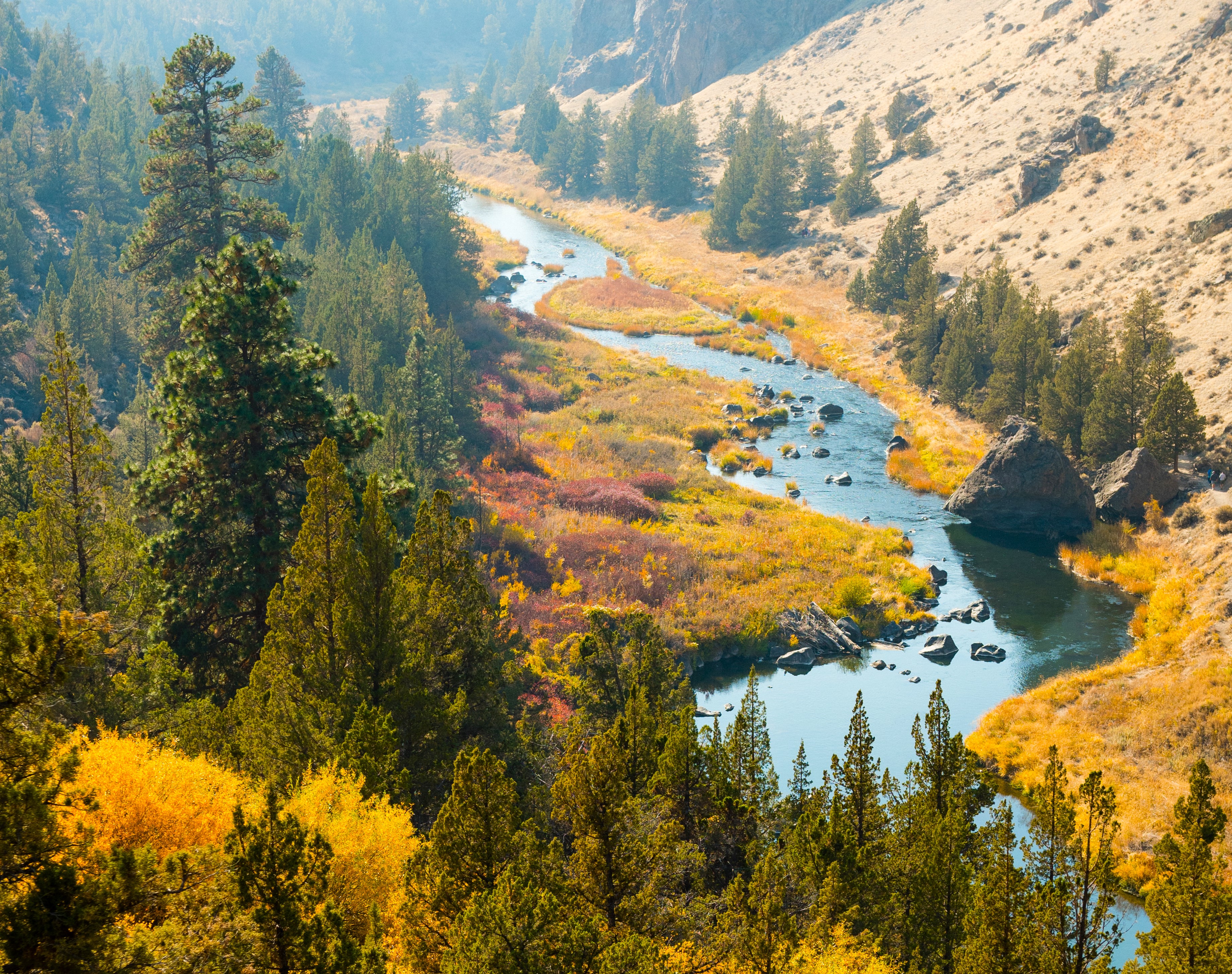
One of Oregon’s crown jewels, the Crooked River winds through farmland, Smith Rock State Park, and miles of wilderness canyons in the Deschutes Basin. The Crooked River also provides important habitat for fish and wildlife, but since completion of the Bowman Dam in 1961 upstream of Prineville, most of the Crooked’s flow above Opal Springs has been controlled by releases from that federally-owned dam. Bowman was originally built to supply irrigation water and to control floods, with only minimal amounts of water allotted to protect streamflows needed for fish.
But now, thanks to a decade of advocacy by WaterWatch to restore and protect flows in the Crooked, water released from Prineville Reservoir for downstream fish and wildlife will finally be protected with an instream water right approved this fall. The state water right was the final step needed to protect water released for fish under the Crooked River Collaborative Water Security and Jobs Act, which WaterWatch helped negotiate, draft, and secure in 2014. Nearly 80,000 acre-feet of water will be protected for fish and to restore streamflows — a huge legal victory for the Crooked River!
Plus, our longstanding work to block a number of new storage projects above Prineville Reservoir that threatened to divert water that should otherwise flow into the reservoir resulted in those storage applications being pulled. One of those proposals sought over 10,000 acre-feet of water that would have inundated a considerable portion of the Wild and Scenic-designated North Fork Crooked River. With these proposed storage projects now no longer a threat, water can flow into Prineville Reservoir to meet the downstream fish flows protected by the Crooked River Act and the newly-minted state water right.
New Legislation Will Limit Groundwater Use by Factory Farms

As wells continue to dry and groundwater resources have grown scarce from the Willamette Valley to the basins of Eastern Oregon, water advocates have started to take a closer look at the impact of private equity firms and out-of-state corporations on groundwater resources with the construction of new, often massive industrial-scale agricultural centers, far beyond the size of anything ever envisioned when Oregon fist developed its land, water, and environmental laws.
Particular attention has been given to agricultural facilities where animals are kept and raised in confinement, called Confined Animal Feeding Operations, or CAFOs. For years these facilities have been able to use unlimited amounts of groundwater without a permit, but thanks to WaterWatch’s advocacy and policy work in Salem, Senate Bill 85 was signed into law by Governor Kotek this summer.
Along with other measures to better regulate the impact of large CAFOs , SB 85 limits the amount of groundwater new CAFOs can access without a water-use permit. Livestock operations will also need to submit water supply plans as part of their applications and renewals to demonstrate they have legal access to all necessary sources of water.
A Final Note
While climate change, outdated water laws and policies, and ill-conceived water development projects threaten the rivers we love in Oregon, your support enables us to give a voice to our rivers, from advancing instream water rights to removing obsolete barriers to fish passage and preventing new dams from being built. Consider WaterWatch’s year of accomplishments, and make an investment in Oregon’s rivers today.
A PDF file of WaterWatch of Oregon’s 2023 Accomplishments can be accessed here. Map designed by Monet Hampson.
